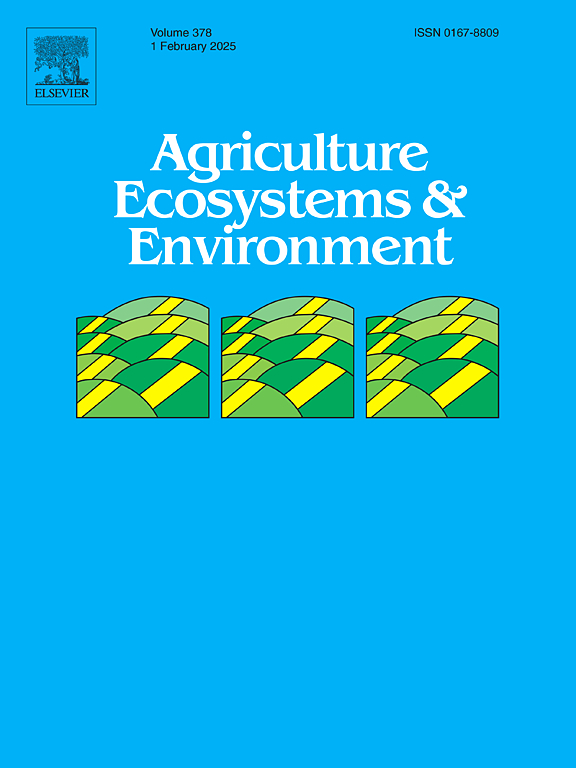IF 6
1区 农林科学
Q1 AGRICULTURE, MULTIDISCIPLINARY
引用次数: 0
摘要
草地生态系统中的土壤氮(N)对放牧高度敏感,因此了解土壤氮的保留对放牧的响应对维持草地生态系统的功能至关重要。在此,我们利用 179 篇论文中的 2785 个配对观测数据,量化了放牧在不同管理制度(放牧强度和持续时间)和环境因素(温度、降水和生态系统氮丰度)下对土壤总氮和可用氮保留量的影响,发现放牧(尤其是中重度放牧)降低了全球土壤总氮和可用氮的保留量。此外,在长期放牧(> 4年)、温度较高(年平均气温≥5°C)、较干燥(年平均降水量≤300毫米)或氮相对充足(初始氮含量≥2 g kg-1土壤)的草原上,放牧与更多的土壤氮流失有关,这意味着气候和环境因素在调节氮流失方面的重要性。同样,我们还观察到放牧与年平均气温、年平均降水量、持续时间和初始氮含量对土壤全氮的交互影响。更重要的是,我们的研究结果强调,放牧对土壤氮的影响可以通过植物地下生物量的响应比率得到最好的解释。我们的研究提供了有助于可持续放牧管理的全球性见解,还需要更多的研究来探讨放牧强度和养分补充对全球草地氮保持的调节作用。本文章由计算机程序翻译,如有差异,请以英文原文为准。
The global effects of grazing on grassland soil nitrogen retention
Soil nitrogen (N) in grassland ecosystem is highly sensitive to grazing, thus understanding the responses of soil N retention to grazing is critical to maintaining grassland ecosystem function. Here, we quantified the effects of grazing on total and available soil N retention under different management regimes (in terms of grazing intensity and duration) and environmental factors (temperature, precipitation, and ecosystem N abundance) using 2785 paired observations from 179 publications, and found that grazing (particularly moderate-to-heavy grazing) reduced total and available N retention worldwide. Additionally, grazing is associated with more soil N loss from long-term grazing (> 4 years), warmer (mean annual temperature ≥ 5°C), drier (mean annual precipitation ≤ 300 mm), or relatively N-sufficient (initial N content ≥2 g kg−1 soil) grasslands, implying the importance of climatic and environmental factors in regulating N loss. Similarly, interactive effects of grazing with mean annual temperature, mean annual precipitation, duration and initial N content on soil total N were observed. More importantly, our results emphasize the grazing effect on soil N was best explained by the response ratios of plant belowground biomass. Our study provides global insights that will aid sustainable grazing management, and more research is needed to explore the regulatory role of grazing intensity and nutrient supplementation on global grassland N retention.
求助全文
通过发布文献求助,成功后即可免费获取论文全文。
去求助
来源期刊

Agriculture, Ecosystems & Environment
环境科学-环境科学
CiteScore
11.70
自引率
9.10%
发文量
392
审稿时长
26 days
期刊介绍:
Agriculture, Ecosystems and Environment publishes scientific articles dealing with the interface between agroecosystems and the natural environment, specifically how agriculture influences the environment and how changes in that environment impact agroecosystems. Preference is given to papers from experimental and observational research at the field, system or landscape level, from studies that enhance our understanding of processes using data-based biophysical modelling, and papers that bridge scientific disciplines and integrate knowledge. All papers should be placed in an international or wide comparative context.
 求助内容:
求助内容: 应助结果提醒方式:
应助结果提醒方式:


